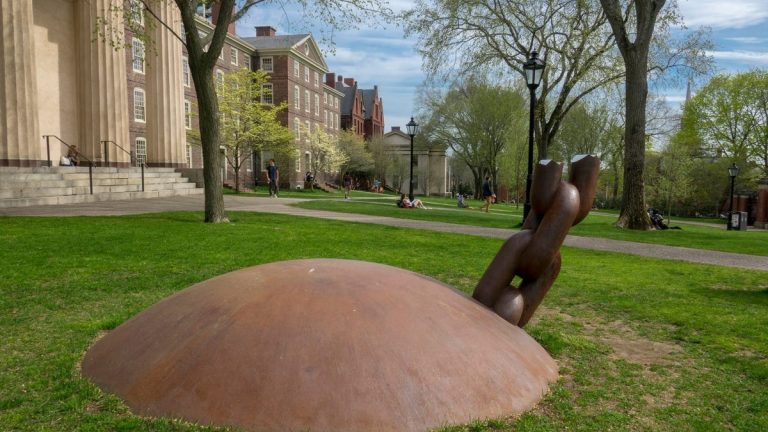Everybody wants to know something about where they came from, the stories that trace back across decades and generations and instill a sense of belonging.
In a country predominantly made of immigrants, the curiosity about how we came to be here is nearly ubiquitous.
This is what led an 83-year-old Black What and Why reader to write in with this request.
“I would love to read something in your paper and how and where some Blacks came from, and how and where they lived,” he wrote. “I would like to see something interesting about us in the paper for Black History Month.”
He also asked why so many Black people settled in Providence.
While those questions are worthy of several books and an unfathomable amount of research, here’s some of what we found.
When did the first Black people come to Rhode Island?
By the 1680 Colonial census – less than 50 years after Rhode Island first became a colony – there were 175 Native and Black enslaved people living in Rhode Island, according to research done by the 1696 Heritage Group. The first of these forced immigrants are believed to have arrived around 1652.
In 1696, the first slave ship, the “Sea Flower” arrived in Newport, carrying 47 captives aboard, according to research by the Providence College library. Fourteen of them were sold in Newport.
Newport became the hub of the slave trade, particularly in the early 1700s, as a key point in the triangular trade, where rum was exchanged for captives in Africa, and then these enslaved people were traded for sugar and molasses grown with slave labor, which was then brought back to New England to be processed into rum.
“Towns as diverse as New York, Boston, Philadelphia, Portsmouth, Newburyport, Charleston and Perth Amboy dispatched slave ships, although Rhode Island was responsible for just more than half of all voyages,” author Sean Kelley wrote in his book “American Slavers.”
While many of these Africans coming through Rhode Island were forcibly sent to Caribbean plantations, Rhode Island had its own culture of slavery, which in some ways differed from other New England Colonies because of the Narragansett Planters.
“South County had a lot of farms, so unlike the rest of New England, there were a lot of enslaved people here,” said University of Rhode Island Assistant Professor of Africana Studies Hannah Francis.
At its peak, there were between 25 and 30 of these plantations in Rhode Island, and it’s estimated that between 15% and 25% of Washington County’s population was enslaved, according to the South County Historical Society. Overall, Rhode Island had the highest percentage of enslaved people in New England. In addition to farm work, these people worked in the houses and also in trades such as blacksmithing, carpentry and masonry.
As for how they lived, strict rules governed what enslaved Black people could do, and punishments such as whipping and branding were inflicted, according to the South County Historical Society. People were sold. Families were separated.
But while Narragansett Planters were prominent, Newport was “the largest of the communities,” Theresa Guzmán Stokes, the executive director of the Rhode Island Black Heritage Society, said.
“Black people and enslaved people were doing everything from sail making to rope making to chocolate grinding,” Stokes said. “This was a major port, so they served in all capacities of the service industries that were here, not just as domestics.”
God’s Little Acre, the African American burial ground on Farewell Street in Newport, is a testament to the size of the population, with headstones that go back to the 1700s.
Through the stones at God’s Little Acre, the Rhode Island Black Heritage Society has been able to gain a better understanding of where in Africa people came from.
Most of the people, Stokes said, had ties to the Akan people, who lived predominantly in what is now Senegal and Ghana.
And sometimes, it’s written on the headstones.
“There’s one man who’s really interesting,” Stokes said. “His name is Cape Coast James because he came from the Cape Coast.”
What about free Black people?
While slavery was prevalent, free Black people were living in Rhode Island. Some were emancipated by those who had held them in slavery, some found freedom by enlisting after the state legislature passed a bill that would free Black men after three years of service in the military to address a critical shortage of troops in 1778.
RI history: Shedding light on the little-known history of New Goree, Bristol’s free Black neighborhood
Then the Gradual Emancipation Act of 1784, which said that children born into slavery would be freed when they reached adulthood, added to the numbers. The 1790 census data listed 948 enslaved people in Rhode Island, which dropped to over 100 in 1810 and then five in 1840. In 1842, slavery was made illegal by the new state Constitution.
Where did free Black people live?
Relentlessly discriminated against, particularly when it came to work, free Black people started forming their own communities.
There was New Goree in Bristol, Scalloptown in East Greenwich, and Hard Scrabble and Snowtown in Providence. Charlestown also had a large Black population.
But even with the created communities, “some places were easier to be than others,” said Catherine Zipf, executive director of the Bristol Historical and Preservation Society.
For example, in Bristol, the main jobs were at the rubber plant, but the plant did not want to hire Black people, Zipf said.
“The jobs in Providence are better, and then Newport is the other place where the jobs are better,” Zipf said. “Both those places had larger African American communities, so that helps.”
To be clear, even in the larger communities there was discrimination. In 1824, a white mob attacked Hard Scrabble. In 1831, Snowtown was attacked by a white mob in violence that lasted four nights before the governor sent in a small army to put an end to it. By the end of the century, Snowtown had been completely displaced by the construction of the State House and the railway.
Even so, Black people continued to move to Providence, particularly during The Great Migration.
“You see it on the census. They’re coming from 1890 through 1920,” Zipf said. “Providence, which is a very industrial city, is a good place to find work.”
What about more modern Black immigration?
In addition to African American history, Rhode Island has a sizable population of foreign-born Black people, which accounted for 29% of the overall Black population in the state in 2015, according to The Economic Progress Institute.
What and Why RI: It was called a blight on Rhode Island and then torched. Here’s the story of Scalloptown.
Within this immigrant population, two-thirds were born in Africa and about one in five were born in the Caribbean.
“Rhode Island has a lot of different members of the African diaspora,” Francis said. “There are people that are African American, and that usually relates to the people who are descendants from enslaved people who were brought here as African captives, but a lot of people that are of African descent are from other places like the Dominican or Cape Verde.”
And these people, she said, often chose to live in Providence for the same reasons that motivated people years ago: because they know someone and because they can find work.
“We know that typically a lot of people that are immigrants usually settle in urban spaces because cities have more opportunities in terms of employment,” Francis said.
As of 2015, about 4 in 5 Black people lived in Providence, according to The Economic Progress Institute.
What and Why RI is a weekly feature by The Providence Journal to explore our readers’ curiosity. If you have a question about Rhode Island, big or small, email it to klandeck@gannett.com. She loves a good question.




